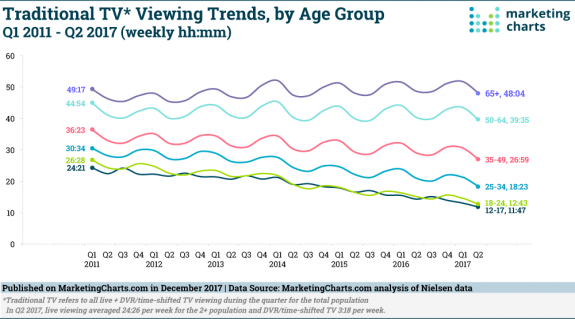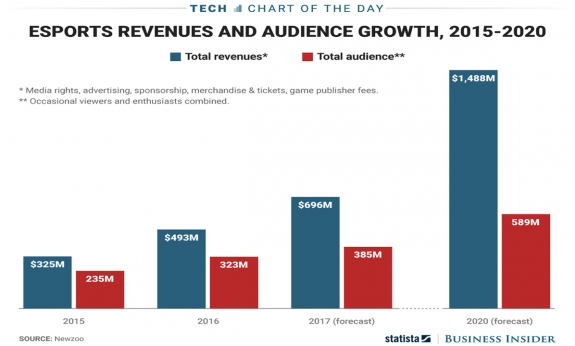ESports is the talk of the town, and the sector is one of the biggest revenue opportunities right now. It’s a key way to reach an audience that can appear difficult for linear TV to attract: millennials. This ultra-connected generation is moving away from linear TV. So, how is it exactly that eSports can help you to reach this often elusive audience?
Who is the millennial generation?
Millennials are born between 1984 and 2000 and aged between 18 and 34. This generation is now a big part of the workforce and has a lot of purchasing power: estimated at $170 billion.
As with every generation, millennials have their own characteristics:
They seem to quickly master new technologies and social media; they are the first generation to be born with computers as everyday tools; and they are digital natives. Plus, they consume a lot of video (as a millennial myself I know this is true!).
Millennials are hard to reach
Called the “Unreachable”, millennials watch less traditional TV than older generations. They spend more time accessing apps and the web on smartphones and other mobile devices than they do watching traditional TV. There’s been a 30% drop over the past six years.

Source: The State of Traditional TV: Updated With Q2 2017 Data
Because they are constantly multitasking, they are always looking for fresh on-demand content.
But there’s a contradiction. Despite the fact that they watch less TV than older generations, broadcast, satellite and cable are still the best way to reach them; not YouTube, Facebook or streaming services like Netflix, as you would think.
For example, adults 18 to 34 watch four times as much TV as they do content on YouTube.
How eSports is attracting millennials
What is eSport? It refers to competitive video gaming, with tournaments played online and in stadiums (yes, stadiums!) where teams of professional players battle each other on a variety of games, such as League of Legend (the most played game), Call of Duty, Hearthstone, FIFA and others. Live streaming this content has become very popular in recent years, as the rise of Twitch TV testifies. And the prize money makes your eyes water.

ESports are booming and the number of fans is growing fast.
Millennials form the largest audience segment in the US; larger than the baby-boomers, with respectively 92 and 77 million viewers. Reaching them with relevant content clearly leads to monetization opportunities.
It is also the first generation to embrace eSports, with both men and women between the ages of 21-35 being the primary viewers. They make up 53% of the total eSports viewership.
How do they watch eSports?
As they are an ultra-connected audience, 70% of eSports fans currently watch it on a mobile device, most of the time on streaming platforms such as Twitch or YouTube Gaming. Streaming gameplay is a phenomenon that has exploded in recent years.
For millennials, eSports are pure and real entertainment, sometimes taking precedence over traditional sports.
In the US there are six million eSports fans (of 20 million in total) that do not watch baseball, ice hockey, basketball, or American football.
Among American male millennials (age 21 to 35), eSport is just as popular as baseball or ice hockey, with 22% watching. (Newzoo)
As the audience for eSports grows, millennials will continue to have high purchasing power and are the biggest challenge for broadcasters in terms of maintaining or growing viewership. eSports is still an untapped gold mine to get millennials to watch more linear TV. Some have already made the first move with the Esports channel GINX Esports TV or TV programs on dedicated sports channels such as “beIN Esports” or the “Canal Esport Club”.
Are you considering eSports as an option for your content? Let us know.

